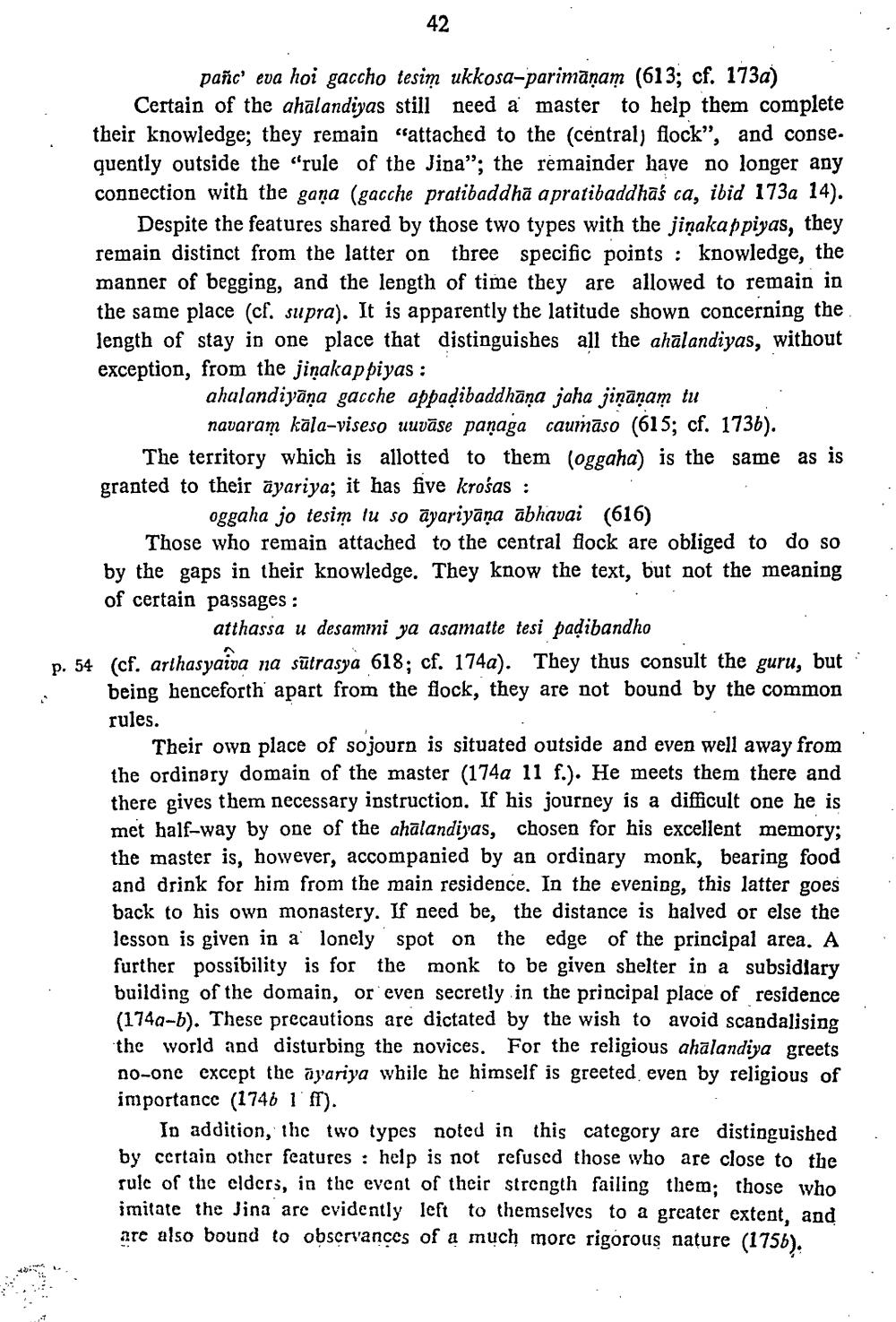________________
pañc'eva hoi gaccho tesim ukkosa-parimāņam (613; cf. 173a) Certain of the ahalandiyas still need a master to help them complete their knowledge; they remain "attached to the central) flock”, and conse. quently outside the "rule of the Jina"; the remainder have no longer any connection with the gaña (gacche pratibaddha apratibaddhaś ca, ibid 173a 14).
Despite the features shared by those two types with the jinakappiyas, they remain distinct from the latter on three specific points : knowledge, the manner of begging, and the length of time they are allowed to remain in the same place (cf. supra). It is apparently the latitude shown concerning the length of stay in one place that distinguishes all the ahalandiyas, without exception, from the jinakappiyas :
ahalandiyāņa gacche appadibaddhāņa jaha jiņāņam tu
navaram kāla-viseso uuvāse panaga caurāso (615; cf. 1736). The territory which is allotted to them (oggaha) is the same as is granted to their āyariya; it has five krošas :
oggaha jo tesim tu so āyariyāna abhavai (616) Those who remain attached to the central flock are obliged to do so by the gaps in their knowledge. They know the text, but not the meaning of certain passages :
atthassa u desammni ya asamatte tesi padibandho p. 54 (cf. arthasyaiva na sūtrasya 618; cf. 174a). They thus consult the guru, but
being henceforth apart from the flock, they are not bound by the common rules.
Their own place of sojourn is situated outside and even well away from the ordinary domain of the master (174a 11 f.). He meets them there and there gives them necessary instruction. If his journey is a difficult one he is met half-way by one of the ahalandiyas, chosen for his excellent memory; the master is, however, accompanied by an ordinary monk, bearing food and drink for him from the main residence. In the evening, this latter goes back to his own monastery. If need be, the distance is halved or else the lesson is given in a lonely spot on the edge of the principal area. A further possibility is for the monk to be given shelter in a subsidiary building of the domain, or even secretly in the principal place of residence (1749-b). These precautions are dictated by the wish to avoid scandalising the world and disturbing the novices. For the religious ahalandiya greets 00-onc except the āyariya while he himself is greeted even by religious of importance (1746 l f).
In addition, the two types noted in this category are distinguished by certain other features : help is not refused those who are close to the rulc of the elders, in the event of their strength failing them; those who imitate the Jina arc evidently left to themselves to a greater extent, and are also bound to observances of a much more rigorous nature (1756).




